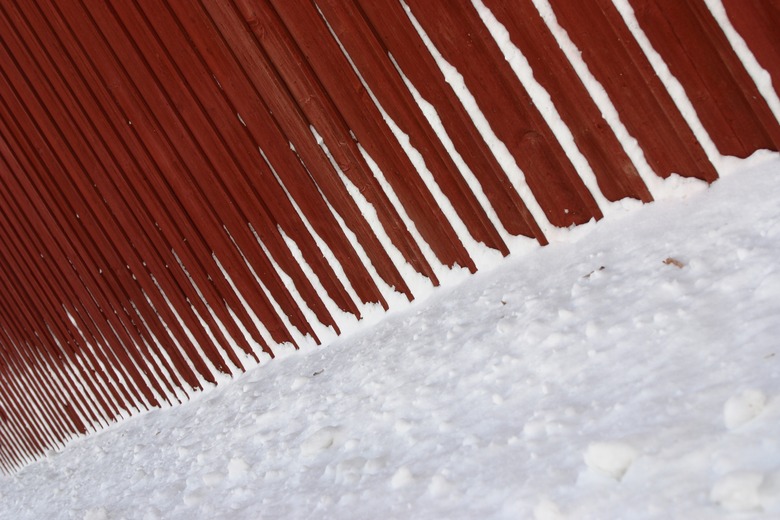Does It Hurt To Put Salt On A Wooden Deck?
Because deicing salts come in a variety of formulations and vary in how harsh or corrosive they are, whether it hurts a wooden deck to put salt on it depends. Consider the type of salt and if it is corrosive to wood or other materials and also consider how environmentally safe the product is. Some deicing salts are definitely not recommended for use on a wooden deck, while less corrosive varieties seem to do little to no harm to the wood.
Salt Types
Salt Types
The four main types of deicing salts are rock salt — also called sodium chloride — calcium chloride, potassium chloride and magnesium chloride. Rock salt is effective at melting ice when the temperatures are between 16 and 20 degrees Fahrenheit, while calcium chloride and magnesium chloride both work at temperatures below zero and potassium chloride is most effective at melting ice when the temperature is above 15 degrees.
What Not to Use
What Not to Use
Rock salt is widely available and often one of the least expensive deicers, but it is also corrosive and not environmentally safe. The runoff from rock salt pollutes streams, rivers and other waterways and can kill or affect the growth of plants. Because rock salt dries out the natural moisture of wood, it's never recommended as safe to use on a wooden deck. When the salt dries out the wood, it affects the natural expansion and contraction process of wood and causes the deck to corrode quicker. Calcium chloride is also a harsher deicing salt; it can cause skin irritation and corrode concrete, and it's not typically recommended for using on wooden surfaces.
What to Use
What to Use
Magnesium chloride is a less harsh deicing salt and it's not thought to harm plants or pollute waterways. Other products marketed as safe for concrete, plants and animals are also suitable for using on a wooden deck. Potassium chloride is also less corrosive and does not harm plants, but since it requires a higher air temperature to melt ice, it's one of the least effective options.
Tips and Warnings
Tips and Warnings
Do not use a metal shovel to remove snow from a wooden deck; instead use a plastic shovel. The metal can chip the wood and cause it to decay. Remove snow from the deck often to prevent ice build up. Only use deicing salts on a deck that is water-sealed. Apply deicing salts before an ice or snow storm to prevent ice formation. Cover small decks with tarps or waterproof materials to keep the ice off. Use sand on the deck for traction, when you are unable to apply a deicer.
